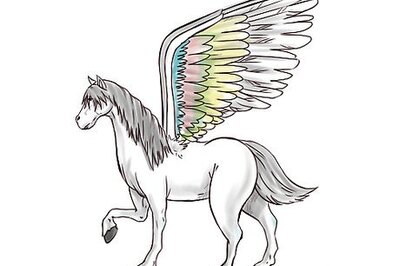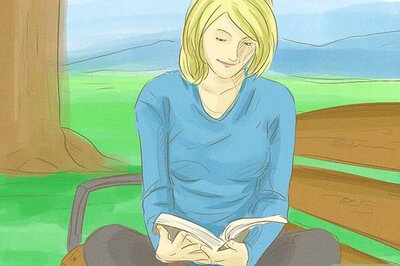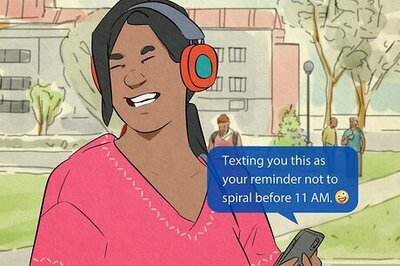
views
The name rang a faint but distinct bell. Familiar, but why? The photograph shows a dapper young man wearing a buttoned-down jacket with angled lapels, hair parted neatly on the left, head tilted ever-so-slightly to the right. This was Nagappen Padayachee, from 1909.
An immigrant to South Africa from Tamil Nadu, Padayachee was arrested in June that year for hawking without a permit. His sentence: 10 days in prison with hard labour. With the conditions, and then being forced to walk to a camp 26 km away, Padayachee fell ill. Six days after he was released, he was dead. "Warders had ignored his illness," said the few lines beside the photograph, "and forced him to continue with hard labour, as the bruises and weals on his body attested."
Five years later, a man called Mohandas Gandhi unveiled memorial tablets to Padayachee and a woman called Valliamma Munusamy at Johannesburg's Braamfontein Cemetery. The tablets remembered both as martyrs to the struggle for equal rights in South Africa. For Gandhi, they were inspirations, "like a lighted match to dry fuel".
Dead at 18, remembered by his home country's most famous son: This dapper youth must have been quite a figure among Indians in South Africa in the early 20th century. But I had never heard of him. So why did "Padayachee" ring a bell?
It came to me several minutes later, and I actually ran back to look closely at the photograph. Usually spelled "Padayachi", it's my Tamil grandfather's caste name. Here it was, in a museum in Johannesburg. Given how these things work, it's even possible that I am related to this young martyr. Was he a cousin once-removed, something like that? No way to answer that, of course. Nevertheless, I stood there a long time, transfixed. What a thought. A possible personal connection, going back a century, to the battle against apartheid: What a thought.

The Old Fort on Johannesburg's Constitution Hill was formerly a prison. Today, it is a museum and a landmark. Both Mahatma Gandhi and Nelson Mandela were held here
The museum is in the cell where Gandhi was once incarcerated, on what is now known as Constitution Hill. There was a notorious jail here through the apartheid years, always called 'The Fort'. After a new South Africa was born in 1994, most of the Fort was demolished to build the country's highest court, the Constitutional Court. As an Indian used to layers of security, even secrecy, that blanket our public institutions, it was startling to simply walk into this place. I mean, I strolled right into the cavernous yet cozy chamber where the senior-most judges of South Africa listen to arguments. I could have sat in their chairs.
Outside the chamber is a panel with fetchingly informal portraits of the judges who have sat, more legitimately, here. For me, the lone familiar name was Albie Sachs. Being something of a compulsive reader about apartheid, I still remember the 1988 bomb placed by his own country's police that ripped off his arm and destroyed his eye. What a place South Africa once was. But also being something of a compulsive follower of cricket, I know of his recent role on the tribunal that inquired into match-fixing. Something discordant about juxtaposing a bomb and cricket? But that’s South Africa.
South Africa, where a prison morphs into a supreme court.
Also outside that chamber is a wall with photographs and quotes from several landmark judgements that this court has delivered. The idea of the wall — indeed of the airy building itself — is many-faceted, said Kalim Rajab, our South African-Indian friend who drove us here. For one, spell out the thinking behind a new Constitution for everyone to see and understand, so they can appreciate their stake in the country. For another, make justice more transparent than it had been for years, than it otherwise might come to be. In general, encourage clarity and candour about the working of the judiciary, so it doesn’t turn remote, abstract.
Out of the rubble of oppression and brutality, rebuild with openness and foresight: What a place South Africa once was, but what a place it is striving to be.
On the wall, it's spelled out in red letters: "The first of the founding provisions in the Constitution defines South Africa as a state founded on the values of human dignity, the achievement of equality and the advancement of human rights and freedoms."
The words stopped me in my tracks just as surely as "Padayachee" did. In particular, there's "the achievement of equality". How easy it is to assume, and airily pronounce, that we are all equal. And yet this country was once a living testament to the ease, instead, of institutionalised inequality. A testament to the brutality that consumes those who assume superiority by virtue of something as trivial, as foolish, as skin colour. In some elemental way, these words drove home just how foolish. Imagine an entire edifice of law and governance built on, let's say, thumb length: The longer, the more exalted. Or earlobe fleshiness: The more succulent, the less privileged. You smile indulgently, but how is either a worse determinant than skin colour — or caste, or faith — of your place in society?

















Comments
0 comment